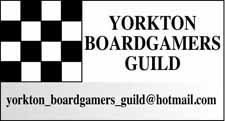When I am perusing the shelves at a book store cover art is an attractant.
Great art might not be enough to sell me on buying a particular title, but it does draw me to take a closer look.
I would not be able to write a particularly detailed dissertation on what is about a particular piece of art, but I do know what I like.
Now you may be wondering what this has to do with a game review?
Well the art in the Core Rule book of the Fate of the Norns: Ragnarok role playing game book is absolutely stunning. It has an 'old world-feel' which is ideal to the material, and it makes reading through the book a visual pleasure.
Now art does not ensure a good game, but it certainly enhances the effort to discover the game. Helena Rosova is credited as illustrator, and she has a fan based on her efforts.
As you might have also gathered, this RPG is based on ancient Viking legend and lore.
There are certain periods of history, Samurai in Japan and Vikings in particular, which are long time interests for me. I am not one of those people totally immersed in the history of a particular interest, but they are something which draws me.
Put the word Viking, or a related topic such as Ragnarok, into the title of game and watch me gravitate over for a look.
Ragnarok is a time of great upheaval in the legends of the Norse, and that is where this game draws much of its great back story from.
"Everything has a beginning, and the Norns dictate that what has a beginning will have an end ... Welcome to the beginning of the end! The age of patience, reason, and restraint has been overshadowed by an age of rage, vengeance, and destruction. Old grievances have resurfaced and reparations come in blood ... in rivers of blood," intros the rule book.
"In this game, one player will take on the role of the Norn and guide the other players through epic Viking sagas set at the end of time, known as Ragnarok. Each player has a character (called a "dweller") who is created and evolves through game play.
Game author and designer Andrew Valkauskas said he wanted to create a game with roots in stories of our own past.
"I've always been a mythology buff, from Norse to Aztec, Egyptian to Indian ... if you really sit down and read the sagas and Eddas you will experience a stream of consciousness that easily holds its own against modern fantasy... and with so much fantasy, I thought it would be refreshing to have something that is deeply rooted in history and mythology. I call the genre "Mythological RPG"," he said.
Valkauskas also said Norse was the direction he wanted to take the game from the very beginning.
"Pretty much from day one," he said, then added, "I have another RPG manuscript called MAIZE that's rooted in the Aztec world, and one day it may hit the mainstream. It has an interesting set of mechanics that are based on Aztec math and mysticism."
With a rich vein of existing lore to draw on Valkauskas said it was a natural not to stray too far from the source material in building the game.
That said a game originally launched in the early 1990s did get some tweaks before a recent relaunch.
"Sticking with only the mythology as a backdrop wasn't too difficult for the original FOTN. However with FOTN 2e we really dug deep into the historical, and finding the right period in history was a huge challenge," he said. "There are so many great events that span 300 AD to 1100 AD that it's hard to pick just one period.
"In 2005 while designing the world for the first age of Ragnarok I stumbled across a very interesting period in history: the war of succession after King Harald Fairhair's death. The first age would suit the 930-960 AD period because so many regions were gripped in chaos. I think once we hit the end of the second age, the FOTN world will be deviating from actual historical events."
It is the evolution of a game based on role playing. Over time they tend to veer from history, although the foundations built in FOTN should resonate well forward in terms of the key elements of the game.
So was it difficult to stick to the source material for FOTN?
"Yes and no," said Valkauskas.
"No in the sense that most of everything could be transcribed successfully, and yes in the sense that filling in the gaps with an authentic feel would be a challenge seeing as how we're so tainted by modern fantasy tropes. Some creative decisions had to be made along the way.. for example are dvergar and svart alfar the same race? Scholars are divided, and I lean towards 'yes' given the evidence, but making them separate for a dynamic game world seems like the right way to go.
"There are also quite a few contradictions and ambiguities that plague the surviving manuscripts. But when you're designing a rational living world, you need to make a call about the natural order."
"Some Norns have wickedness in their hearts, and take more than they give; others are benevolent and weave Tapestries that become great legends.
"A few mortals, called Voelvas, are attuned to the Norns. They catch glimpses of the Tapestry of the current age and can foretell events before they unfold. But each Tapestry is an epoch, a collection of ages ...
"Welcome to the end of this Tapestry ... Welcome to Ragnarok!"
Remembering FOTN began some two decades ago. innovation within the game tend to look different based on what year you are looking from.
"Check it out via www.fateofthenorns.com
If anyone in any of these games feel free to contact [email protected]




